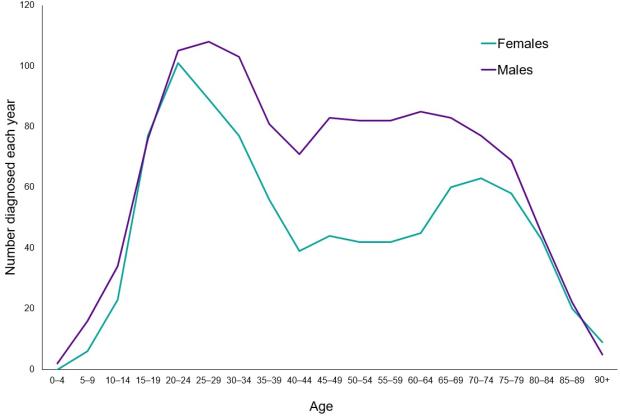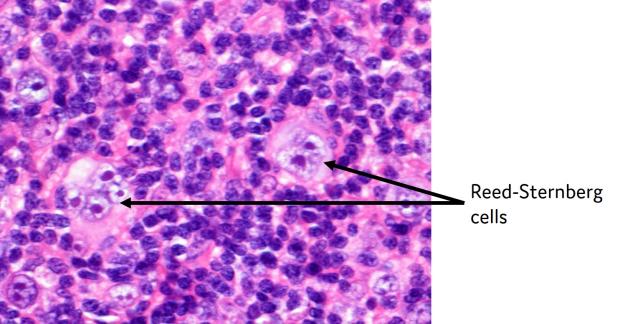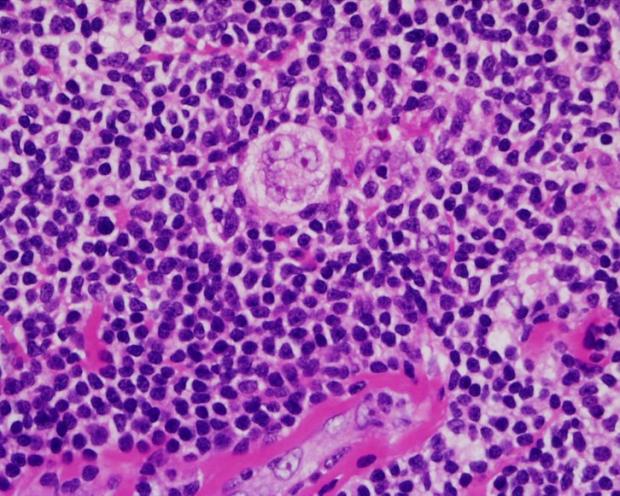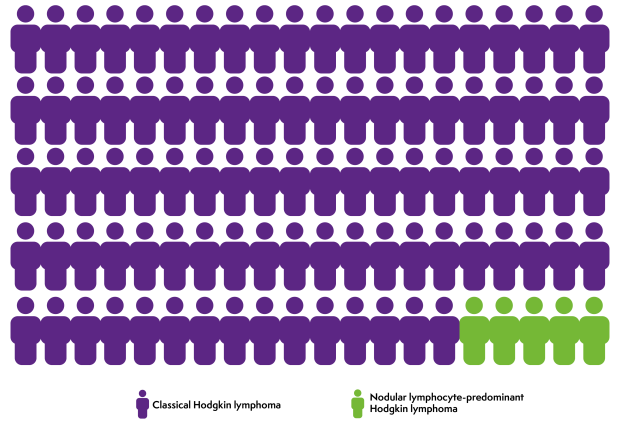Hodgkin lymphoma
This information gives you an overview of Hodgkin lymphoma. We have separate information pages with more detailed information on the two main types of Hodgkin lymphoma: classical Hodgkin lymphoma and nodular lymphocyte-predominant Hodgkin lymphoma (NLPHL).
On this page
What is Hodgkin lymphoma?
Lymphoma is a type of blood cancer that develops when white blood cells called lymphocytes grow out of control. Lymphocytes are part of your immune system. They travel around your body in your lymphatic system, helping you fight infections.
Lymphomas can be grouped into Hodgkin lymphomas or non-Hodgkin lymphomas, depending on what the lymphoma cells look like when doctors examine them under a microscope.
- Hodgkin lymphoma contains abnormal cells called Reed–Sternberg cells. It is named after Dr Thomas Hodgkin, who was the first person to describe it in 1832.
- Non-Hodgkin lymphoma is any type of lymphoma that is not Hodgkin lymphoma.
We have separate information on possible causes and symptoms of lymphoma.
We also have an animation about Hodgkin and high-grade non-Hodgkin lymphoma that you might find helpful. It is designed to help parents and carers who have lymphoma talk to their children about it.
Professor John Radford gives an overview of Hodgkin lymphoma, covering what it is, who it might affect, diagnosis and treatment.
Who gets Hodgkin lymphoma?
Hodgkin lymphoma is rare. Around 2,100 people are diagnosed with it each year in the UK – roughly six people every day.

Hodgkin lymphoma can occur at any age, although most people diagnosed are between the ages of 15 and 34, or over 60. We have separate information on lymphoma in children (aged 0 to 15) and lymphoma in young people (aged 16 to 24).
Hodgkin lymphoma affects slightly more males than females. It can develop in people of any ethnic background.
If you are worried that you might have lymphoma, or have any concerns about your health, contact your GP.
Types of Hodgkin lymphoma
There are two main types of Hodgkin lymphoma, based on how they look under a microscope. We have separate information pages on these:
Classical Hodgkin lymphoma contains cells called Reed–Sternberg cells. They look a bit like owl-eyes under a microscope.

There are four subtypes of classical Hodgkin lymphoma:
- nodular sclerosis classical Hodgkin lymphoma
- mixed cellularity classical Hodgkin lymphoma
- lymphocyte-rich classical Hodgkin lymphoma
- lymphocyte-depleted classical Hodgkin lymphoma.
Nodular lymphocyte-predominant Hodgkin lymphoma (NLPHL) contains a variant of Reed–Sternberg cells called lymphocyte-predominant (LP) cells. They are sometimes called ‘popcorn cells’ because they look a bit like pieces of popcorn under a microscope.

We cover all types of Hodgkin lymphoma in our book on Hodgkin lymphoma.
How common is each type of Hodgkin lymphoma?
Most people have classical Hodgkin lymphoma. Nodular lymphocyte-predominant Hodgkin lymphoma (NLPHL) is rare.

Nodular sclerosis classical Hodgkin lymphoma is more common in young adults. Mixed cellularity classical Hodgkin lymphoma is more common in older adults.
All the different subtypes of classical Hodgkin lymphoma are treated the same way. NLPHL behaves differently and needs different treatment. Classical Hodgkin lymphoma and NLPHL usually respond very well to treatment. They are unlikely to come back after successful treatment.
